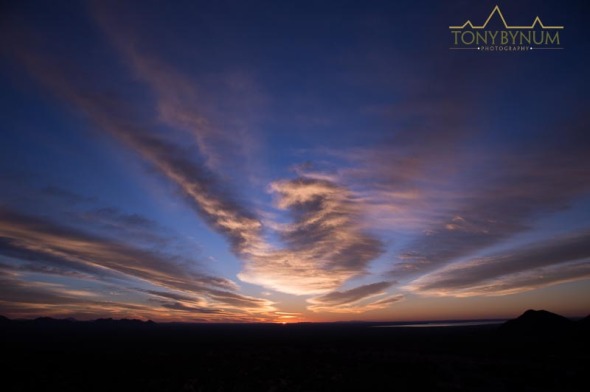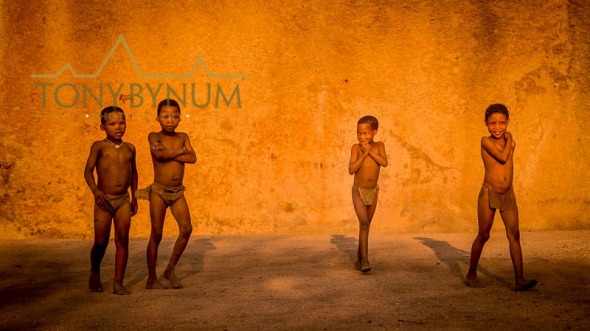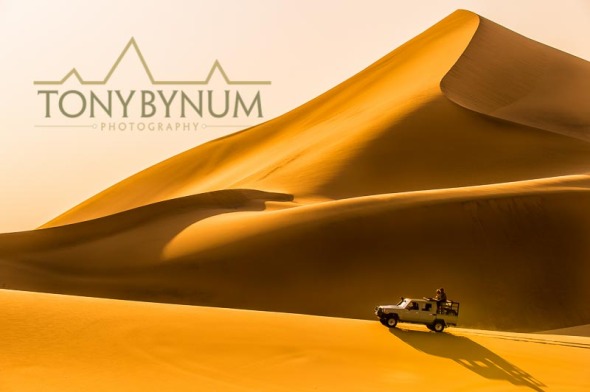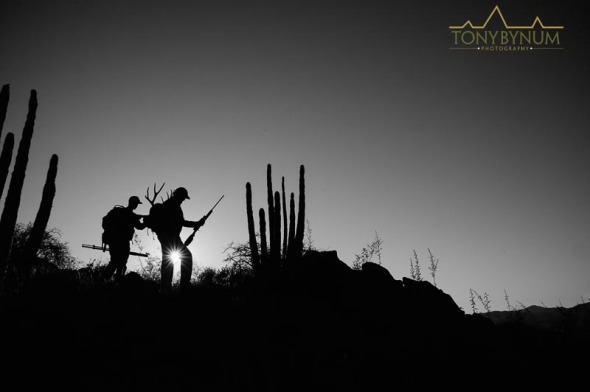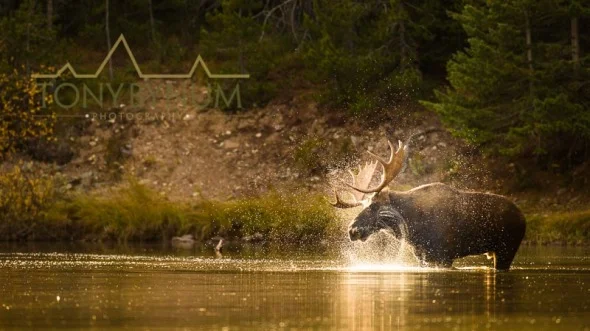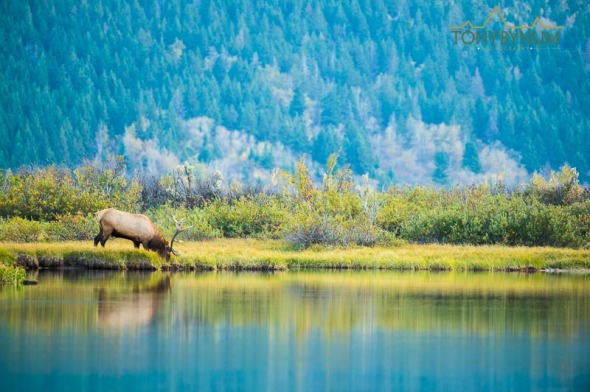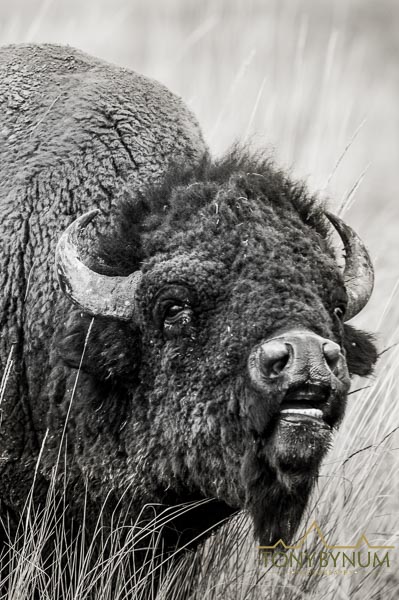Tony Bynum - Montana Photographer - Big Stories through his lens
Montana Photographer Tony Bynum at work, photographing a fly fishing guide and outfitter on Montana’s Missouri River.
Tony Bynum - Montana Based Photographer
Outdoor photographer, commercial outdoor advertising, conservation, political campaign, nature photographer.
“Don’t just love something, do something for it.”
Tony Bynum - Montana Photographer
“This Lens Tells Big Stories.” A short video describing one of Tony’s photographic passions. Human stories in big places. This video takes place in Tony’s home state of Montana on the world-famous, blue-ribbon trout stream, the Missouri River.
Tony is photographing local guide and outfitter, Alger Swingly. Alger is a member of the Blackfeet Tribe and operates, Blackfeet Outfitters. Alger is a licensed Montana Outfitter.
This short feature was produced in partnership with SmugMug, a first-class online photography website for sharing, storing, and delivering photographs.
Are instagram likes worth more than cash? - why you Should think twice before giving your Photographs away to Backpacker Magazine.
Giving away your photographs for likes? Better rethink your business strategy.
A lone hiker on the prairie, Eastern Montana near Ekalaka. Shot on assignment for the Montana Wilderness Association.
I have been on the Backpacker photo list for a decade, maybe more (probably not after this post though). Backpacker Magazine always has amazing photocalls, probably some of the best in the business. The staff makes their photo calls very specific, they provide plenty of notice and even offer to help photographers develop their skills and plan photo shoots - impressive team for sure.
According to Wikipedia, Backpacker Magazine has been published since 1973 and is currently published by Active Interest Media based in Boulder, Colorado.
As far as I know, it was also the first to request GPS locations for all submitted photographs - seems to me that was about 2010 or so don’t quote me - I don’t know if they still are requiring location coordinates, because I stopped submitting to them once they instituted that policy.
The Email that did not shock the industry, but should have
On September 20th, 2018 a Backpacker Magazine email arrived in my inbox. I read it. It was announcing that Backpacker Magazine was going to accept free photos for its Instagram feed! (email pasted below). Yes, this was your opportunity to have your hard earned imagery used at no cost to you - except you already own the gear and went to whatever expense it took to get the photo in the first place, but I digress.
For a long time (by digital photography standards) the photography community has been worried, trembling may be the better word, that the value of their work is diminishing and will likely someday be worth only the applaus someone is willing to give it.
Well, for some, that day has come. If you’re in the adventure, outdoor, hiking photography business - which pretty much everyone below the age of 26 is these days, your time has arrived, your fears have come to fruition - even if you had not realized them yet!
Someday your photos might be worth more in “likes” than in cash. I got news for you, you can’t spend likes and more today then ever, digital marketing is more sophisticated and marketers and brands are on to likes, verse engagement. Even social media experts, the ones who have turned vudu for most of us, into a science, will tell you that likes are not worth much, and are going to continue to be worth less.
Just have a list to my friend Huntz Colburn and Brad Luttrell on the Restless Native Podcast talk about digital marketing. If you want to hear the latest on influencer marketing, listen to Joshua Claflin and Brad talk about the present and the future of influencer marketing here on the restless native podcast.
What has value is engagement, not likes, but real, authentic back and forth engagement. The kind of engagement that you might get if your work is shared and discussed on YOUR own page.
Let’s look at this in more detail. What would you give Backpacker Magazine? Your best work because of its huge audience? What happens when you give your best work away and it gets a few thousands likes and you get one new follower? What did you just earn for your best work? You mean your work is good enough for the backpacker instagram page but not for the cover of its print publication?
Okay, so here’s another option. How about your “B” roll? Most of you don’t create “B” role, at least I hope you don’t call it that, because you’re the “A” shooter, right? So, if you’re the “A” shooter, why would you consider giving away “B” work for free and to be placed on the Backpacker instagram page? See what I mean? Just the fact that you agree to place your “B” work someplace makes you the “B” shooter. The the best marketing strategy I’ve heard in a long time - sarcasm.
You’ve decided to give away your “B” roll, or maybe said a better way, trade it for likes, why do you think Backpacker would choose to use it? Why take the time? Is it to get noticed and maybe sell them a file for their print magazine? If that’s it, you’ve already received their email notice and get their submission requests so they know your work. Why is your work not going in the print publication and why are you not making money selling it to them? Do you think now that you’ve given it to them for free they are now going to start buying your work? Why would they buy the cow when they get the milk for free?
There might be more reason to consider sharing your content with them if they had engagement or if you stood a chance and getting something real, tangible, something that will help you build your brand.
Likes are not real, engagement and building your relationships are.
Maybe more importantly though is back to the idea of engagement. I know some guys on instagram (I said guys becuase I mostly follow guys so that’s what I’m familiar with) that have 3,000 followers and literally get 100’s of comments. Their engagement is huge by comparison.
Take a look at @backpackermag. I just checked this morning. 521,000 followers. The second post on the feed is beautiful, about 4,000 likes, but ONLY 12 comments and two of them are by their social media person. What’s going on? Is that the audience you want?
Think about it. Of the over HALF A MILLION people following backpacker ONLY a dozen comment? Again, I ask you, are the backpacker followers the ones you want THEY DONT EVEN ENGAGE the brand why would they all of sudden follow you after you give your best work away to Backpacker?
Maybe you choose to give over your finest work, your hope is that you’ll become “Instafamous” to the point that you’ll be, “making-it” by selling space on your feed, after all those free backpacker posts drove so much traffic to your page that now you don’t need Backpacker any more - of course I’m being sarcastic. You’d be better off playing the lottery!
Build your own career in your own space, for your own future. I’m not saying don’t share your work, or give some of it away to charity if it fits your brand or social desires. But, for heaven’s sake, if you’re going to work for free, or worse, lose money, give your talent, time, money and your work away to meaningful causes that you’d be involved with no matter what your persuasion, passion, or profession.
Backpacker is a for profit empire, the people looking at your photos are being paid and so are the writers!
Don’t fall for the “we’ll make you famous” pitch!
Let me know what you think, and if you’ve “made-it” by giving away your photographs, tell us what “made-it” means to you and how you did it, we’d all love to hear the story!
Backpacker Magazine Email to it’s contributors
“Hey there Contributor Community!
We are now accepting submissions to be featured on our Instagram. BACKPACKER has over 500,000 followers making this a great opportuntiy to promote your work to our targeted audience who is already hungry for inspirational, outdoor adventure content. Please check out this google form for more information.
Cheers!!
Photo Editor + Staff Photographer
BACKPACKER | backpacker.com @backpackerma”
This is an unpaid post opportunity, but if you feel like your audience/following/engagement are of value to Backpacker & would like to collaborate, please feel free to send me an email!
We look for all the same elements in a Instagram post as we do for print:
-legit day hikes or multi-day trips.
-no cars (sorry #vanlifers) or roads
-we gravitate away from images that feel commercial in any way
-we mostly share US locations
-legal campsites, legal spots to stand, and legal spots to shoot from only.
-We will not show an image that is in conflict with LNT guidelines (i.e. tents must be 200 feet from a water source).
-we try and show timely, seasonal content
-Backpacker's Instagram is a curated feed, and submitting is not a guarantee for sharing
-We appreciate when you share our post with your audience as well, either through a repost app or stories
On Northwestern Outdoor Radio
Presently, I am out in the field for a special research project involving Wolverines, but I wanted to share this clip from this week's Northwestern Outdoors Radio show.
I was interviewed by John Kruse, host of the show, to talk about two things:
- Elk photography and my free e-book on wildlife photography.
- My thoughts on the work that the Wilderness Society is doing to protect and promote our wild public lands, as well as my role in the #OurWild Campaign.
It was a pleasure doing the interview and I hope you enjoy it!
Photography Inspiration from a "Friend"
Photography Inspiration comes from all kinds of places. Even from people you may not know. Sometime in early April 2016 I received a letter in the mail. I checked the address, it was from a person I did not know. What makes that worth a blog post? This was a handwritten letter from a "friend" I'd never met.
Joe's thank handwritten thank you note.
The envelope contained several postcard photos. On the back of one was a handwritten note. It read,
"Tony,
Thank you for being such an inspiration!
Seeing your work has inspired me to use my voice & platform as an artist, to be an advocate for Hunting and Conservation.
Thank You!
Cheers,
Joe Mannino"
There was also an invitation to attend Joe's, Master of Fine Arts Thesis Exhibition in Greenville, North Carolina.
I'm often asked about what I did to "make-it" in the photography world. Most of the time I reference something very simple, like, "I just do what motivates me."
Thank you Joe Mannino,
Sincerely,
Tony
Micro four thirds and 4k video - is it time to switch?
I've mentioned micro four thirds, aka "mirrorless," in previous posts. As fast and as far as technology has taken imagery, there still are trade-offs no matter the type of photography you choose. 35mm digital single lens reflex cameras (DSLR), along with crop sensor DSLR's are used by most outdoor photographers due to their size, availability, quality construction, quality lenses, and finally, price. I guess one could say, DSLR's today occupy the space on a graph where price and quality meet. Of course there are better cameras with bigger sensors that offer better results, but for most, me included, they are not important to my workflow.
Outdoor sports and adventure photographers, wildlife photographers, and journalists are always looking for smaller, lighter, faster tools, while maintaining a minimal level image and product quality. That minimum level for image quality is today still largely based on the demands of magazine publications i.e., print. So, while I don't like to think I'm compromising on quality, I must in order to get my gear where I need to go - as mentioned, it's a balance between size and quality output. I use full frame Nikon cameras, and large aperture lenses when I'd prefer to use a 50 mega pixel back on a medium format camera resulting in even better files, but that's just not realistic for me, after all I'm a photographer first because I enjoy it!
Micro four thirds cameras offer that smaller size equivalent to DSLR's. But the image quality is still not there for print. I have not found a regular place in my professional photographic workflow (although I do own and use a Nikon AW-1 - a small, interchangeable lens camera - but that's for very specific purposes). The Nikon AW-1 while not a micro four thirds camera is a micro, mirrorless, interchangeable camera that fills a similar niche. The Nikon AW-1 is actually an eight to three ratio and not four thirds. I will go into more detail about this camera in a future post, but for now I'll get back to micro four thirds.
I've spent dozens of hours using the Panasonic Gh 3 and a good selection of prime as well as zoom lenses. For video, I doubt you can find a better set up, for the price, than the new Gh4. But for stills, mainly because I shoot a lot of low iso in low light, the micro four thirds, like the Gh3 still don't produce the quality of files I need for still photography.
I've heard people like Dan Cox say that micro four thirds are good enough for his work and I know there are other's that would agree. Just take a look at Dan's camera bag and read his blog posts about micro four thirds. I love the photo of his camera bag, makes me get scared of photography. In fairness, I like Dan, we are friends, so I'm not ripping on him, I'm pointing out that he's a fantastic, successful photographer and use's four thirds systems. Here's the link to Dan's blog.
Simply put, imagine if you need the quality of a full size DSLR with wide aperture lenses and yet you have the occasion to use a smaller, lighter micro four thirds camera. If size and portability are part of the equation, packing two systems does not make any more sense than leaving the DSLR at home altogether. So, I'm not sure how it helps anyone in my business to support four thirds when it's only marginally useful and if you do any amount of travel, it's nearly useless to try to stuff both systems (or more) into your carry-on. . . If you have a different view, or a real solution to this dilemma please share your thoughts by commenting below, we all would love to hear them.
On January 10, 2015, I'm not ready to change over to micro four thirds as my primary, commercial photography tool. It's not time for me to switch, but it is time to take notice and work one into to my photography business more completely.
If you are interested in learning more about 4k video, and micro four thirds photography, the following video does a great job of showing the benefits of 4k and the weight and ergonomics of micro four thirds. If you're a photographer and have been considering some video work, this video may help you make the move to owning at least one small micro four thirds camera system. 4k might well be the intersection of quality and price when it comes to high quality video. I suggest you take a closer look.
Thank you for taking the time to visit my blog. If you're on social media, lets continue the learning and the discussion - twitter: @tonybynum, Instagram: @huntphotos, and Facebook: @Tony Bynum Photography
The Ansel Adams Act- "to restore the first amendment rights of photographers"
The Ansel Adams Act of 2015. H. R. 5893. To restore the First Amendment Rights of Photographers.

Man photographing Glacier National Park winter scene. The Ansel Adams Act would return restore first amendment rights to photographers on public lands. ©tonybynum.com
Exert from the bill:
"Prohibition on Fees, Permits, or Insurance.--No Federal
Government agency shall require fees, permits or insurance as a
condition to take still or moving images on Federal lands, National
Parks and Forests, and public spaces, whether for private, media, or
commercial use.
(d) Prohibition on the Seizure and Forfeiture of Photographic
Equipment.--Federal law enforcement officers or private contractors
shall not seize any photographic equipment or their contents or memory
cards or film, and shall not order a photographer to erase the contents
of a camera or memory card or film"
As a photographer this interests me a great deal. Years ago I tried to make the argument that the Professional Outdoor Media Association ( the only national traditional outdoor media organization, and I honorably and proudly serve as an executive member of the Board of Directors), should push the first amendment rights of photographers when our "rights" are infringed. Much like the National Rifle Association pushes the constitution rights of Americans to own guns. I was denied support in exchange for my support of a bill that would require photographers and videographers to pay a yearly fee for access to our public lands for filming and photography. That bill never became law, although Murkoski of Alaska introduced the bill and Montana's senator John Tester worked hard crafting it.
Today, there's a new bill that shall be referred to as the, "Ansel Adams Act." Its purpose is to return first amendment, constitutionally based rights back to photographers. While the bill does not address video and it will have to define the word "photography" so there's no confusion, it's a step in the right direction. Technology is changing everything and unless our laws keep up with the changing world, we will continue to lose rights, and congress will continue to build it's power over us in exchange for big money from special interests.
I would like the bill to go a step further and add some language about video and the number of people that can be grouped together. In the past, regulations have applied to two or more people leaving being outdoors collecting digital media to the pursuits of a single person acting alone.
If you would like to read the short bill, you'll find the bill, the "Ansel Adams Act," at this address.
I recommend you contact your house and senate members and refer them to the Ansel Adams Act by showing that you support this bill. Share the bill broadly via social media, and if you have the time and capacity, write about it on your own blog.
How do you feel about this bill? Does it make sense, would you support it?
Tony
2014 - What Makes a Great Outdoor Photography Year?
2014 is history. It's been a great outdoor photography year - I'm blessed. What makes a great outdoor photography year? To start, both myself and my family all are happy and healthy. Beyond that, the rest was about the experience of the adventure and living life to it's fullest. In brief, here are a few exerts from the past year's adventures, followed by a few photographs and at the end of the blog, a list of 10 things I learned this year.
200,000 individual moments of time were turned into digital data from adventures across the globe; I witnessed extraordinary wildlife action in extraordinary places.
Wore out a couple of Nikon cameras; broke more than $5000 worth of gear - some completely and beyond repair;
I used the third string lens to complete a commercial shoot; trashed a half dozen pair of pants and blew the crotch completely out of one;
left some of my own clothes with people on other continents who would appreciate them more than I would;
sent a 50 inch canvas print of a man and his wife to him weeks after she suddenly passed away - I'm grateful I was there to capture the moments before her passing;
I tossed in the trash three pairs of boots because they were done being useful; logged more than 50,000 air miles and I have no idea how many on my pickup;
pulled thorns out of my legs and ass on two continents;
swam naked across an Alaskan glacial river in the dark with just a headlamp while the gear and guns were left behind;
slept overnight, outside, in a wet down sleeping bag - twice; stood in front of a young man holding an AR-15 . . . for 20 minutes - we did not speak the same language - that was interesting;
I get to live in a place where for at least half the year I can keep ice-cream outside without it melting; watched our kids play violin, and sing during and after school programs; shoveled snow; stacked fire wood;
witnessed the sun come up more than 250 times; and, I'm busy, I can't remember a moment when I did not have something enjoyable and fun to do.
I love my life! Here are more outdoor photographs from 2014:
After all of that, I'd like to share a few things I learned -
1. Stay focused on the goals.
2. Pay attention to details - every singe one!
3. Clean your sensor - often!
4. Have two but preferably three back up plans.
5. Things will go wrong - again.
6. There's time for work, and there's time for play - don't confuse them and don't get too distracted by either one.
8. Most of all, it's a lot better to be happy than it is to be right . . .
9. Success is a team effort, you can't make it alone. . .
10. If you're not making mistakes, you're doing something else very wrong!
If you've gotten this far, thank you. What photographs or adventures do you remember from 2014 and do you have any advise of your own for 2015?
Here's to a happy new year 2015!
Tony Bynum
Photography Quotes - 10 photography quotes that you should read
Photography quotes help to remind us of the most important aspects of photography. I'm always trying to distill photography down to as simple a terms as I can. Having rules and remembering small anecdotes and quotes helps me stay focused. There is one quote that stands out to me, more than any other. I"ll share it with anyone that's inclined to ask me about photography. Here's is my favorite photography quote.
"The more you photograph, the more you realize what can be photographed and what can't be photographed. You just have to keep doing it." - Eliot Porter
Here's a list of 10 photography quotes, with author's, that I like. This list includes some quotes about capturing photos, while others are focused at the business of photography.
10. "There is only you and your camera. The limitations in your photography are in yourself, for what we see is what we are." - Ernst Haas
9. "It's more important to click with people than to click the shutter." - Alfred Eisenstaedt
8. "If I could tell the story in words, I wouldn't need to lug around a camera." - Lewis Hine
7. "Light glorifies everything. It transforms and ennobles the most commonplace and ordinary subjects. The object is nothing, light is everything." - Leonard Missone
6. "Look and think before opening the shutter. The heart and mind are the true lens of the camera." - Yousuf Karsh
5. "Sometimes you can tell a large story with a tiny subject." - Eliot Porter
4. "One should really use the camera as though tomorrow you'd be stricken blind. To live a visual life is an enormous undertaking, practically unattainable. I have only touched it, just touched it." - Dorothea Lange
3. "A photograph is usually looked at but seldom looked into." - Ansel Adams
2. "Photography is an art of observation. It’s about finding something interesting in an ordinary place . . . I've found it has little to do with the things you see and everything to do with the way you see them." -Elliot Erwitt
1. "The more you photograph, the more you realize what can be photographed and what can't be photographed. You just have to keep doing it." - Eliot Porter
If you have a quote you like, post it, with the authors name, and tell us why it resonates with you.
Tony Bynum










